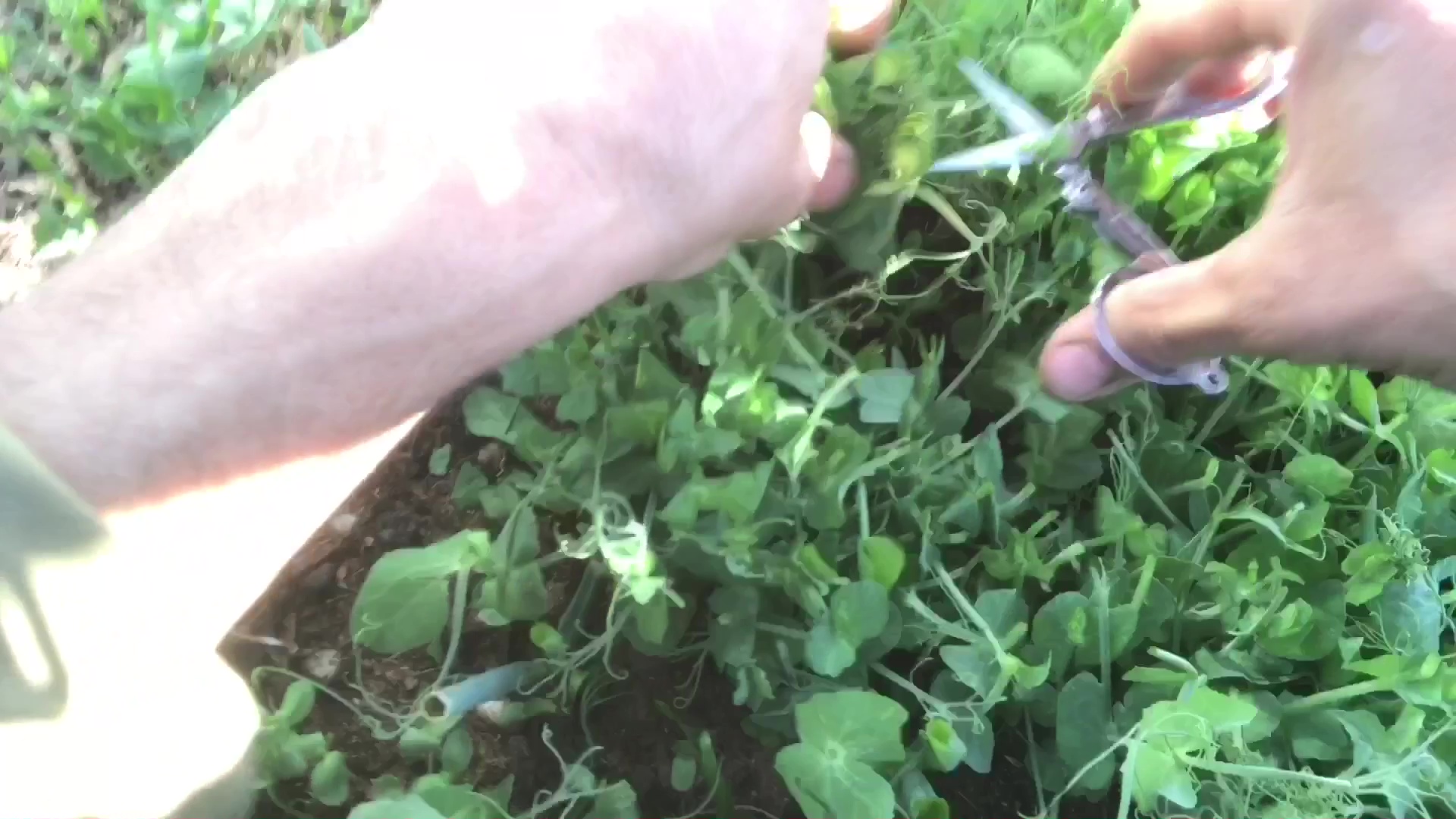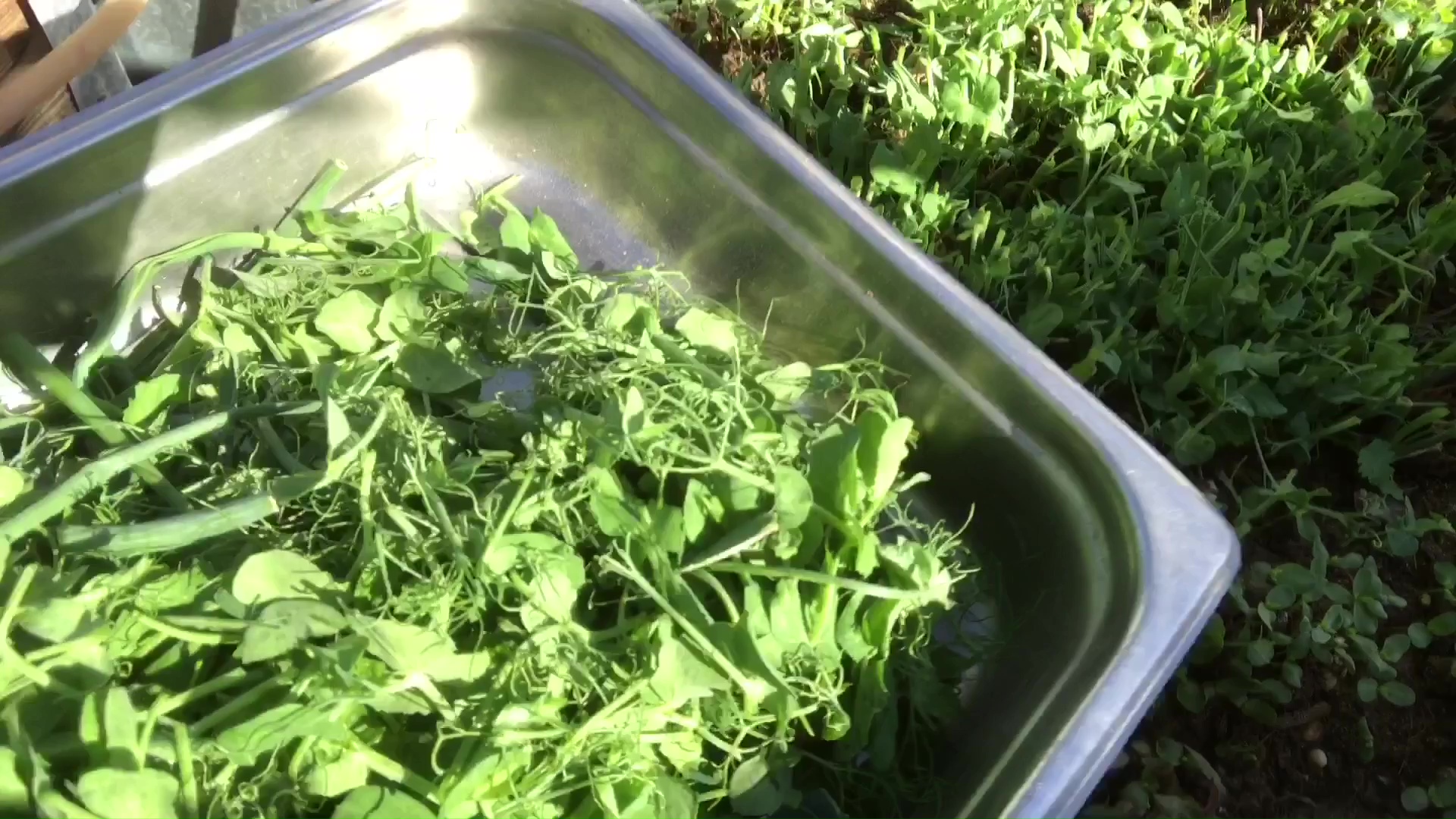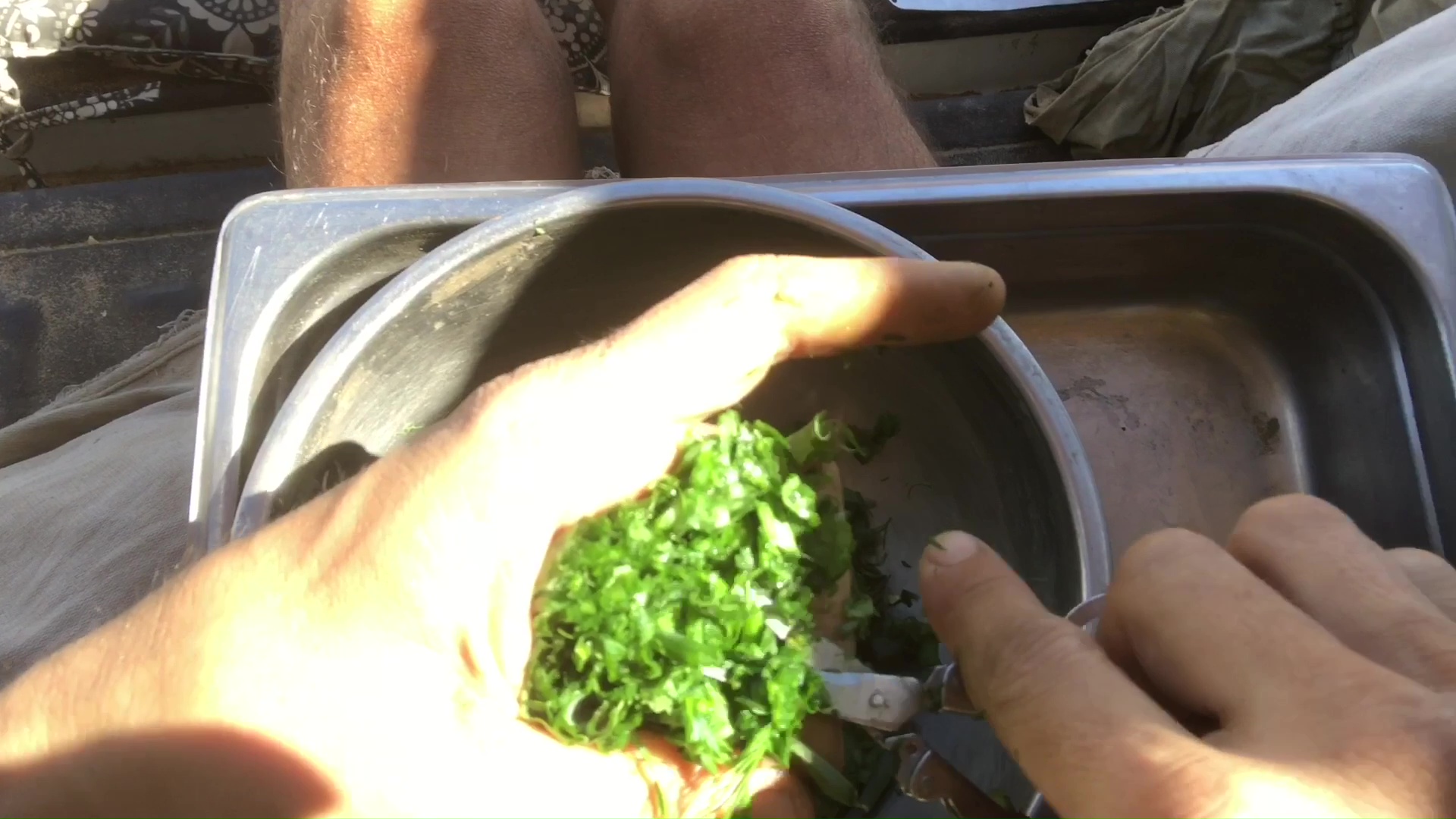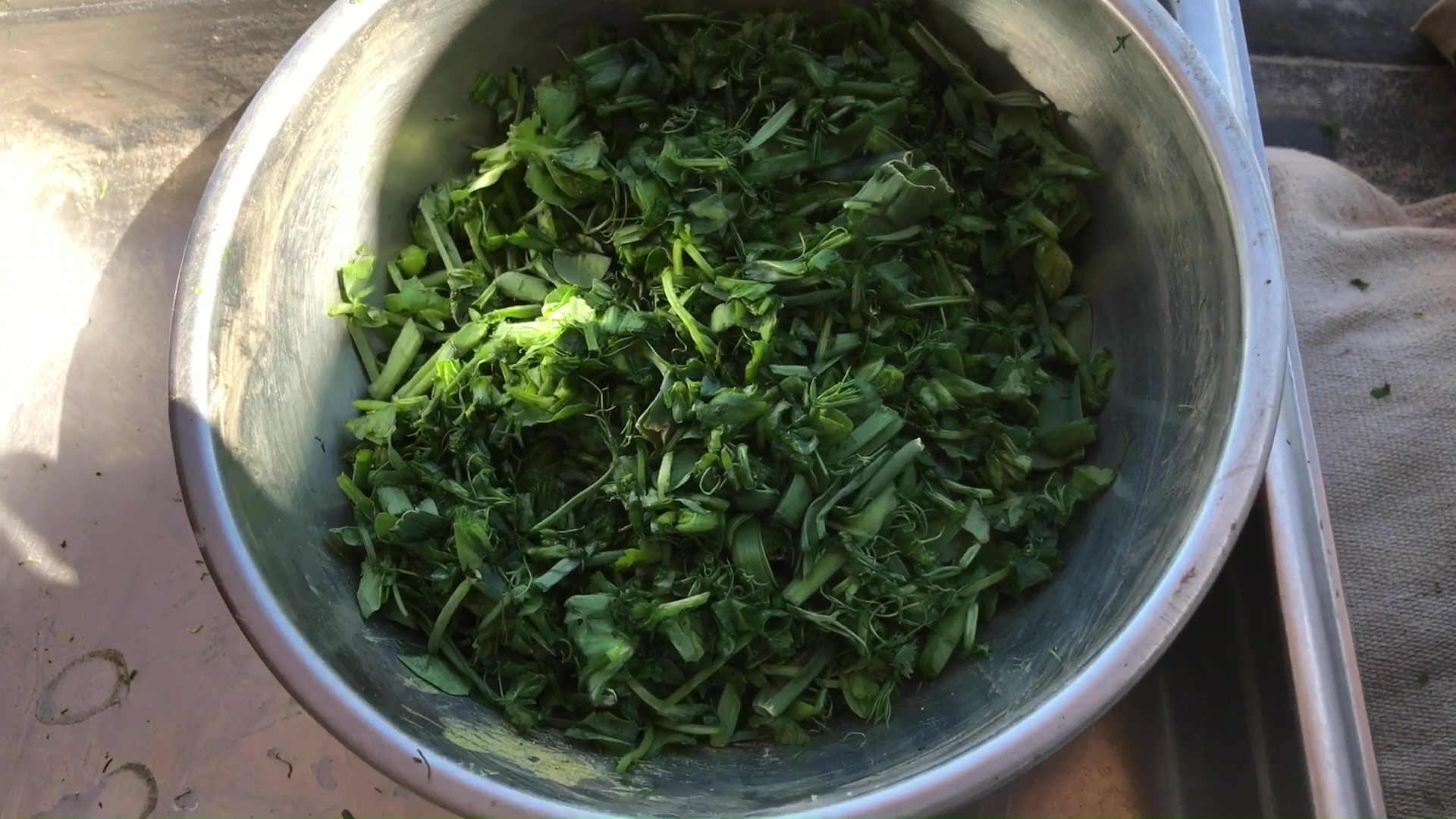
01 Harvesting Pea Micro Greens With Stainless Steel Folding Scissors

02 Collecting Pea Micro Greens Harvest In Stainless Steel Tray

03 Prepping Pea Micro Greens For Fermentation Kimchi By Holding In A Fist And Cutting With Scissors

04 Fine Cut Pea Micro Greens In A Bowl Ready To Be Transferred To Kimchi Fermentation Jar
Pea Micro Greens Harvest From Desert Bonsai Food Forest Garden Dome
Year after year in the desert, as I attempt to establish crops against all odds, it's been pea micro greens that have never disappointed. I've learned that there is a significant tactical advantage in survival gardening to plant species that have larger and more secured seeds. Peas are like pebbles, they're like little rocks. They can take a lot of shock and force from being moved around, being in extreme temperatures, being stored for years. Just this season I'm on my forth year of planting the same bulk bag of peas. I don't know how long the bag was on the shelf before I got it, but that's at least four plus years that I've had them barely sheltered from the elements and extreme temperatures and they're still germinating reliably. So not only are they very resilient, the fact that their not tiny vulnerable seeds results in them not being hauled off by hungry ants. Also the fact that they are larger seeds that produce a larger sprout they're just simply far more capable of making their way up through deep, dense, unfriendly soil conditions.
Gardening outside in the desert with minimal wind mitigation, I've have had to learn to live with sand storms repeatedly coating the surface of my gardens with sand. They changes the texture of the soil, affects the PH, and can make it more difficult for seeds to successfully sprout. Again, that's why I'm so glad to have brought out a 5 gallon bucket of peas. Any time of year except for the coldest days, they'll sprout and have little if any issue getting established no matter what the soil conditions. I enjoy the taste of the soft stems, leaves, and vining tendrils, though for some it may be an acquired taste and texture. My main consideration is to not let them get too dry and to cut them into very small pieces to make them more edible as they can be very fibrous and hard to chew into smaller bits. Of course, the fresh pea pods and flowers are great. Eventually I'll be at a point where I can sustain my own supply by replanting as much if not more than what I eat.
In extreme conditions, when you need greens and you can't risk losing a planting season's crops because your favorite greens are to delicate to take hold, I suggest experimenting with pea greens. My life depends and has depended on them for several years now, and it's probably going to remain that way indefinitely.